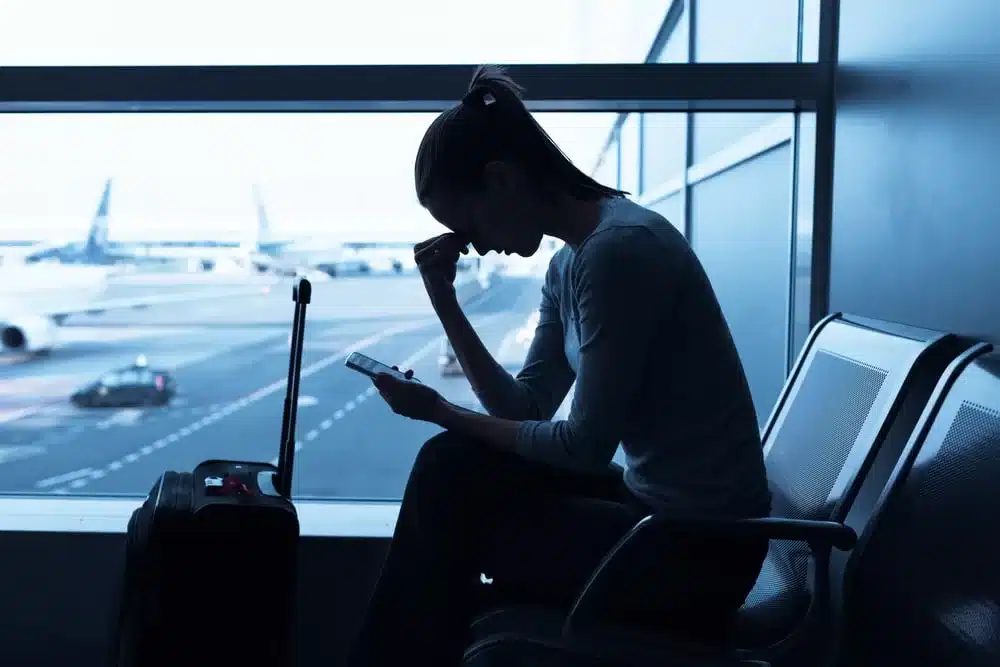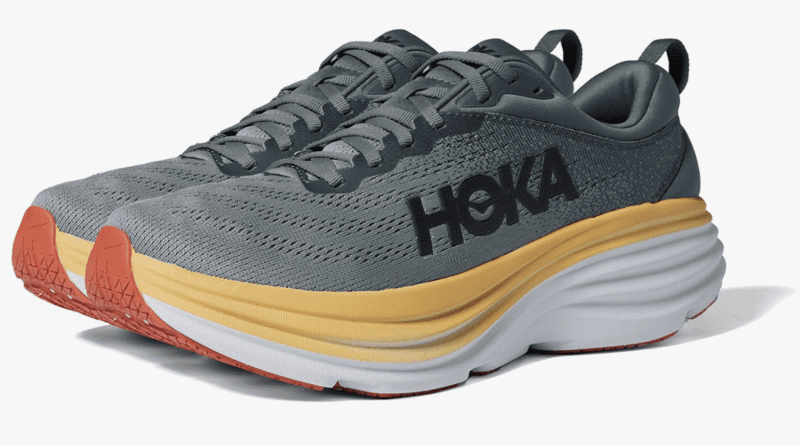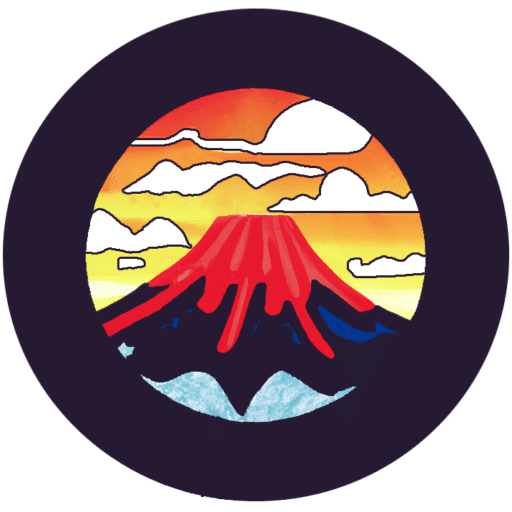
How to Manage Chronic Pain while Traveling
Traveling, so often associated with relaxation and adventure, can pose significant challenges for us living with chronic pain. The physical exertion, long hours of sitting, sudden changes in climate, and disruption of daily routines can often exacerbate pain levels. However, no individual should have to forego the pleasures and experiences that travel offers due to chronic pain. Practical advice and solutions are crucial in navigating these challenges and ensuring a comfortable journey. This guide aims to provide actionable steps and insights to help adult travelers with chronic pain make their trips more manageable and enjoyable, without compromising their health.
TABLE OF CONTENTS
Understanding the Challenges
Discomfort and Pain Management
Strategies for Overcoming Challenges
A. Researching Travel Options
B. Understanding Pain Trigger
C. Planning Activities Carefully
D. Prioritizing Rest Break and Flexibility
E. Budgeting for Massages and Utilizing Massages
Managing Medication
Comfortable Clothing and Accessories
A. Importance of Packing Comfortably
B. Choosing theRight Footwear and Clothing
C. The Benefits of Compression Sleeves
D. Supportive Accessories for Added Comfort
Alternatives to Exercise
Managing Emotional and Psychological Stress
A. Seeking Support from Fellow Travelers
B. The Power of Sharing Experiences and Emotional Support
C. Locating Medical Facilities, Pharmacies, and Support Groups in Unfamiliar Cities
D. Stress Management Techniques
E. The Importance of Self- Care Practices
Conclusion
Understanding the Challenges
A. Physical Limitations
Living with chronic pain means recognizing and accepting that there might be certain physical limitations while traveling. It’s critical to understand that these are not restrictions, but just a different way of planning and experiencing travel. You might not be able to embark on a strenuous hike or sit through a long haul flight without breaks, but this doesn’t mean you can’t enjoy your trip. Acknowledging these limitations is not a sign of defeat, but a step towards managing your pain effectively. The key to a fulfilling journey lies in focusing on what you can do, rather than what you can’t. Plan activities that are within your comfort zone, take regular breaks to rest, and most importantly, listen to your body. It’s okay to have slow days or change plans if you’re not feeling up to it. Remember, the goal of traveling is to enjoy and experience new things, and with the right management, pain patches for travelers can help ensure chronic pain doesn’t have to stand in your way.
B. Common Physical Limitations:
For individuals living with chronic pain, certain activities might pose a challenge. It’s important to be aware of these potential limitations, as understanding them can aid in more effective trip planning. Here are some common physical limitations that one might encounter:
- Long Duration Sitting: Prolonged sitting, such as during flights or car rides, can trigger or worsen pain for many. Regular breaks to stretch and move can be beneficial.
- Heavy Lifting: Carrying heavy luggage can strain the muscles and joints, potentially increasing pain levels.
- Strenuous Physical Activity: Activities like hiking, climbing stairs, or extreme sports could be challenging and might exacerbate pain.
- Climate Sensitivity: Sudden changes in weather or extreme conditions can adversely affect some chronic pain conditions.
- Lack of Rest: Travel often involves disrupted sleep schedules, which can contribute to higher pain levels. Regular rest and maintaining good sleep hygiene is crucial.
- Inadequate Access to Facilities: Not all travel destinations may have adequate facilities for rest, medication, or physical support for those managing chronic pain. Planning ahead can help anticipate and address these issues.
Discomfort and Pain Management
A New Routine
Travel disrupts the routines we’ve established at home, that part of the thrill and novelty of travel. For individuals with chronic pain, this includes essential pain management routines. The unpredictability of travel schedules can make it challenging to maintain regular physiotherapy sessions, medication timings, or periods of rest that help manage pain. However, with a little foresight and planning, it is possible to adapt your pain management regimen to the demands of travel. Packing a portable pain relief kit with necessary medications, topical creams, heat wraps, or cooling patches can be a lifesaver during long flights or car rides. Consider scheduling rest periods into your travel itinerary, giving your body ample time to recuperate. If possible, explore options for mobile physical therapy or exercises that can be done on-the-go. Remember, managing your pain effectively ensures that you can fully enjoy your travel experience.
Strategies for Overcoming Challenges
A. Researching Travel Options:
Thorough research is the cornerstone of a successful and enjoyable trip for those managing chronic pain. Before deciding on a destination, it’s important to consider whether it caters to your specific needs. Look into the accessibility and terrain of the location, the average weather conditions, and the availability of medical facilities. Consider choosing destinations that are known for being disability-friendly or that offer activities and attractions that don’t require strenuous physical effort. The internet is a treasure trove of information – make use of travel blogs, forums, and reviews by other travelers with similar conditions to gain a realistic understanding of what to expect. Remember, the goal is to find a balance between adventure and comfort to ensure a memorable and pain-free vacation.
Note: Prioritizing Accessibility, Medical Facilities, and Accommodations
Traveling with chronic pain necessitates careful consideration of the accessibility, medical facilities, and accommodations in your chosen destination. Accessible transport options, lodging amenities, and attraction sites are especially crucial. A location with easily maneuverable terrain, accessible public transport, or availability of rental mobility equipment can make a significant difference in your travel experience. Ensure your accommodation is comfortable and suits your needs, whether that means selecting a hotel with an elevator, choosing a ground-floor apartment, or verifying the availability of necessary room amenities.
Being away from home doesn’t mean being away from medical care. Always locate nearby medical facilities and pharmacies in your travel destination. Knowing that you can have access to timely medical assistance if needed offers peace of mind and let you focus on enjoying your adventure. Consider carrying a letter from your doctor explaining your condition and medications, as this can be helpful in emergencies or even routine checks at pharmacies or customs. Remember, by carefully selecting accessible destinations and accommodations, and familiarizing yourself with the local medical facilities, you can ensure a smoother, more enjoyable travel experience.
B. Understanding Pain Triggers:
Managing chronic pain is a profoundly personal journey, and understanding your unique pain triggers is a significant step in this process. Pain triggers are specific conditions, activities, or stimuli that exacerbate your pain levels. These could range from certain physical activities, periods of stress, specific food and drink, lack of sleep, to even changes in weather.
By identifying what prompts your pain, you can proactively avoid or mitigate these triggers, thus managing your pain more effectively while traveling. This is particularly important, considering the unpredictability and variety of scenarios you might encounter on your journey. Keep a pain diary to record your daily activities, diet, moods, and pain levels. Over time, you’ll be able to detect patterns and pinpoint potential triggers.
Remember, this process involves a lot of trial and error, and what works for one person might not work for another. So it’s essential to be patient with yourself, and consult with your healthcare provider regularly to make adjustments as needed. After all, the goal is to travel with as little pain as possible, empowering you to fully enjoy your adventures.
Note: Keeping a Pain Journal
The key to managing chronic pain while traveling is understanding your triggers, and one of the most effective ways to do this is by keeping a pain journal. This is a record of your daily activities, diet, sleep patterns, and pain levels, which can help you identify what exacerbates your condition. When traveling, make a note of any changes in pain levels and the likely triggers – it might be a certain food, a long day of walking, or even the weather.
The pain journal can be a powerful tool for adapting your travel plans. For example, if you notice a particular activity is causing discomfort, you can choose to limit or avoid it entirely for the rest of your trip. Or, if a type of food seems to aggravate your pain, you can make dietary adjustments.
Remember to document the time, intensity, and location of the pain, as well as any activities you were doing just before and when the pain started. This level of detail can help you and your healthcare provider to better understand your pain and formulate effective strategies to manage it. With this adaptive approach, your pain journal becomes not just a record, but a roadmap to a more enjoyable and less painful journey.
C. Planning Activities Carefully:
Careful planning of your activities is another critical aspect of managing chronic pain during travel. Consider your limitations and pain triggers when deciding on your itinerary. While it’s tempting to pack your day with thrilling adventures, remember to pace yourself and allow time for rest and relaxation.
Prioritize activities that you are most excited about and schedule them for times when you’re typically at your most energetic and least in pain. Don’t forget to factor in the physical demands of each activity – a leisurely city tour could be just as fulfilling as a challenging hike, and much kinder to your body.
Remember, it’s okay to say no to some activities, or to take a day off for rest if you need it. Being mindful of your body’s signals and respecting your limits is not a sign of weakness but an essential part of managing chronic pain. By planning your activities with care and consideration, you can ensure a travel experience that is memorable, enjoyable, and most importantly, not overshadowed by pain.
D. Prioritizing Rest Breaks and Flexibility:
Incorporating ample rest periods and flexibility into your travel itinerary can significantly help manage chronic pain. Travel often involves a lot of walking, standing, or sitting in one position for extended periods – all of which can exacerbate pain. So, it’s essential to schedule regular rest breaks throughout the day to allow your body to recover. This could be as simple as taking a leisurely lunch in a local café, sitting on a park bench while soaking up the local ambiance, or returning to your accommodation for a short nap.
At the same time, embrace the idea of flexibility when planning your trip. Having a rigid schedule can create unnecessary stress, which can in turn trigger pain. Instead, have a list of optional activities that you can choose from depending on how you feel each day. This way, you’re not missing out completely if you decide to skip an activity due to pain.
Remember, it’s your vacation – there’s no need to adhere strictly to a plan. Listen to your body and adjust your plans accordingly. Prioritizing rest and flexibility will allow you to enjoy your trip without overtaxing your body, ensuring a more comfortable and pain-managed travel experience.

E. Budgeting for Massages and Utilizing Massage Services
Incorporating massage therapy into your travel plans can be an effective way to manage chronic pain. Here’s how you can strategically budget for and utilize these services during your travels:
- Budgeting for Massage Therapy: Start by researching the average cost of massage services in your destination. This could vary greatly depending on the region, type of massage, and duration of the session. Once you know the average prices, you can budget accordingly. Setting aside a separate fund dedicated to pain management is crucial. When in South East Asia, foot massages can be found in any tourist area for less then $10 USD and Tip. Most beaches in Mexico have massage services right on the beach.
- Airport Massage Chairs: Look out for massage chairs in airports during layovers or waiting periods. These chairs can offer a quick, inexpensive way to alleviate some tension and pain. Prices can vary, but generally, you can expect to pay a few dollars for about 5-10 minutes. While this is not a full substitute for professional massage therapy, it can offer temporary relief during long, strenuous travel days.
- Hotel Massage Services: When booking accommodations, check if they offer in-house massage services. Having these services readily available at your hotel can be incredibly convenient, saving you the time and effort of searching for a massage therapist in an unfamiliar city. You can even inquire about the costs beforehand and incorporate these into your budget.
Remember, a massage not only helps to alleviate pain but also promotes relaxation, which can be particularly beneficial after a long day of exploration. By including massage therapy in your budget and being strategic about utilizing available services, you can better manage chronic pain while traveling and enjoy a more comfortable journey.

Managing Medication
Packing Medication for Travel
- Create a Medication List: Start by making a comprehensive list of all the medications you are currently taking, including their dosages and the regularity of their intake. This list will serve as a helpful reference during your travels, especially in case of any medical emergencies.
- Pack Sufficient Quantities: Always pack more medication than you think you’ll need. This accounts for any potential delays in your travel plans and ensures that you won’t run out of your medication while on your trip.
- Use Original Packaging: Whenever possible, keep your medications in their original packaging. This helps border officials recognize them more easily and minimizes the risk of them being mistaken for illegal substances.
- Carry a Copy of Your Prescription: A copy of your prescription ensures that you have the necessary authorization for your medication, particularly for drugs that are controlled substances.
- Divide Your Medication: Split your medication between your carry-on and checked luggage. This way, if your checked luggage gets misplaced, you will still have access to your medication in your carry-on.
- Keep Medications Accessible: Finally, keep your medications handy. Long flights or car rides can make it difficult to retrieve your medication, so having it within reach will be beneficial.
Utilizing Pill Organizers and Medication Reminder Apps:
Utilizing tools like pill organizers and medication reminder apps can greatly simplify the process of managing your medication while traveling. Pill organizers allow you to sort your medication by day and time, which can help prevent missed doses or accidental double dosing. They are especially handy if you’re taking multiple medications at different times of the day.
On the other hand, medication reminder apps can serve as your digital assistant, alerting you when it’s time to take your medication. These apps can also store vital information such as medication names, dosages, and physician contact details, which can be crucial in emergency situations. Furthermore, some apps can even track your medication intake and create useful reports that can be shared with your healthcare provider.
Using pill organizers and medication reminder apps can not only reduce the stress associated with managing your medication but also contribute to more effective pain management during your travels.
By following these steps, you can ensure that you have all the necessary medication to manage your chronic pain, making your travel experience smoother and more enjoyable.

Comfortable Clothing and Accessories
A. Importance of Packing Comfortably:
Wearing comfortable clothing and accessories plays a vital role in managing chronic pain while traveling. Soft, loose-fitting clothes allow for better blood circulation and can prevent discomfort caused by tight, restrictive clothing. Prioritize materials that are breathable and moisture-wicking to help regulate your body temperature during long travel days.
Furthermore, don’t underestimate the value of comfort-focused accessories. For instance, compression socks can help reduce swelling and discomfort in your legs during long flights or car rides. A neck pillow or back support can alleviate pressure points and improve posture, thus mitigating pain. Ergonomically designed backpacks or luggage can also reduce strain on your back and shoulders, making your travel experience more comfortable.
Remember, every small step towards comfort can make a significant difference in reducing pain and enhancing your overall travel experience. So, pack wisely and prioritize comfort above all else.
B. Choosing the Right Footwear and Clothing:
Selecting the right footwear and clothing is an essential aspect of managing chronic pain during travel. Comfortable shoes with good arch support and cushioning can tremendously reduce strain on your joints, especially during long periods of walking or standing. Opt for shoes that have been broken in, as new shoes can lead to blisters and increase discomfort.
Clothing with stretchable or adjustable features are also beneficial. They provide greater ease of movement, accommodating fluctuations in body size due to factors like heat and humidity. For instance, pants with an elastic waistband or adjustable straps can offer more flexibility and improve comfort.
C. The Benefits of Compression Sleeves and Shirts:
Compression sleeves and shirts can also contribute significantly to pain management. They apply gentle pressure to the skin, enhancing blood circulation and decreasing inflammation. This can provide relief from pain, especially for those suffering from conditions like arthritis or lymphedema. Additionally, they can help manage swelling during long flights, where mobility is usually limited.
D. Supportive Accessories for Added Comfort:
Supportive accessories can be game-changers in ensuring a comfortable travel experience. Consider items like lumbar support cushions for better posture during long car rides or flights, or wrist braces if you plan to do a lot of heavy lifting. Compression gloves, often used by those with arthritis, can reduce pain and swelling in the hands. Don’t forget about the potential benefits of orthopedic insoles in your shoes for additional comfort and support.
By investing in appropriate footwear, adjustable clothing, and supportive accessories, you can manage chronic pain more effectively during your travels. These small adjustments can significantly enhance your overall comfort, allowing you to truly enjoy your travel experience.
Alternatives to Exercise
A. Addressing Physical Activity Limitations:
While traveling, it can be tempting to skip exercise, especially when dealing with chronic pain. Yet, staying active can be one of the best ways to manage discomfort. Here are some alternative ways to incorporate physical activity into your travel agenda:
- Low-Impact Exercises: Opt for workouts that put less stress on your body. Swimming, cycling, or gentle yoga can keep you active without exacerbating pain.
- Short Walks: If rigorous exercise is out of the question, try taking short, leisurely walks. It’s a great way to explore a new place and maintain mobility.
- Stretching: Regular stretching can increase flexibility and prevent stiffness. Make a habit of stretching during rest stops on road trips or during long flights.
- Pilates and Tai Chi: These exercises can help build strength and flexibility with minimal stress on your joints. They can be done in the comfort of your hotel room.
- Resistance Bands: Carry lightweight resistance bands in your luggage for quick and easy strength training exercises.
Remember, it’s essential to consult with your physician before starting any new exercise routine. They can help determine what activities are safe and beneficial for your specific condition. Don’t push yourself too hard—listen to your body and give yourself permission to rest when needed.
B. Low-Impact Exercises to Do While Traveling:
There are several low-impact exercises that can be done while traveling, perfect for managing chronic pain. Let’s explore a few:
- Yoga: Yoga is a superb option for a low-impact exercise that can be done anywhere. It aids in flexibility, reduces stress, and helps with pain management. You can find numerous online classes suitable for all levels, and all you need is a yoga mat, which is easy to pack.
- Stretching: Regular stretching is essential to prevent stiffness and increase flexibility, particularly during long car rides or flights. There are numerous stretching routines available online that target different areas of the body and require no special equipment.
- Swimming: If your accommodation has a pool, swimming can be an excellent low-impact exercise. It is gentle on the joints, builds endurance, and helps strengthen muscles. Plus, it is a refreshing way to start or end your day.
Remember, before starting any new exercise routine, do consult your healthcare provider. They can guide you regarding which exercises are safest and most beneficial for your specific condition. And always listen to your body’s signals, taking breaks or modifying activities as needed to avoid exacerbating your pain.
Managing Emotional and Psychological Stress
A. Seeking Support from Fellow Travelers:
Traveling with chronic pain can sometimes feel like a lonely journey, but remember, you are not alone. Connecting with fellow travelers can be a powerful coping mechanism. Sharing your experiences, challenges, and tips with others who understand what you’re going through can provide emotional relief and even practical advice. Don’t hesitate to reach out to travel communities, both online and offline. Many support groups and forums exist where people share their own experiences of traveling with chronic pain, and they can be a valuable source of information and solidarity. You might find comfort and strength in knowing that others are successfully traveling and managing their pain, just like you.
B. The Power of Sharing Experiences and Emotional Support:
Sharing experiences and providing emotional support can have profound benefits for individuals navigating chronic pain while traveling. By exchanging stories and advice, you can learn new strategies for managing your pain, discover resources you might not have found on your own, and gain fresh perspectives on your situation. In addition to the practical advantages, the process of sharing can also provide valuable emotional support. It can be incredibly comforting to know that you’re not alone on this journey, that others understand the challenges you face, and that they can offer empathy and encouragement. This sense of camaraderie can foster resilience and positivity, helping you to better cope with pain. By actively engaging in conversations with fellow travelers, you’re not only learning how to manage your condition more effectively, but also building an affirming community that understands your challenges and supports your travel aspirations.
C. Locating Medical Facilities, Pharmacies, and Support Groups in Unfamiliar Cities:
When traveling to unfamiliar cities with chronic pain, it’s crucial to know where you can find medical facilities and pharmacies should the need arise. Research beforehand and mark the locations of nearby hospitals, clinics, and pharmacies. Apps such as Google Maps can help you find these facilities quickly in your vicinity. If you have specific medical needs, look for specialized healthcare providers in your destination city.
Pharmacies are also crucial resources for managing chronic pain. While traveling, you might need to refill prescriptions or purchase over-the-counter medication. Take note of the operating hours of pharmacies near your accommodation. It could be beneficial to know a few 24-hour pharmacies in case of emergencies.
Support groups can be a lifeline for those managing chronic pain. Online platforms like Meetup or Facebook groups often have local chapters in different cities where you can find companionship and share experiences. You can also ask your healthcare provider or look online for pain management support groups in your destination city. Although traveling with chronic pain can be challenging, remember that resources are available to support you throughout your journey.
In the era of digital information, you can often find the resources you need at your fingertips. Utilize online platforms, apps, and travel forums to find relevant information when you’re in unfamiliar cities. Websites like Healthgrades and Zocdoc can help you locate medical facilities and doctors in your vicinity. For pharmaceutical needs, apps like GoodRx offer information about nearby pharmacies along with price comparisons for medications. Furthermore, platforms such as Facebook and Reddit have numerous groups and forums dedicated to travel, where you can ask for recommendations or advice about managing chronic pain while on the go. Always remember to verify any information found online with trusted sources or healthcare professionals.
D. Stress Management Techniques:
Traveling with chronic pain can understandably lead to increased stress and anxiety. However, practicing stress management techniques can significantly help in maintaining mental wellness.
- Deep Breathing Exercises: Deep breathing is a simple yet powerful relaxation technique that can help to ease your body and calm your mind. It involves inhaling deeply through your nose, holding your breath for a few seconds, and then exhaling slowly through your mouth. You can do this exercise anytime, anywhere – during a car ride, on a flight, or even before going to bed.
- Mindfulness: Mindfulness means living fully in the present moment without judgment. It involves focusing your attention on your current experiences – what you are sensing, feeling, or thinking. A basic exercise to practice mindfulness is to focus on your breath or on any bodily sensations and simply observe them without trying to change anything. Practicing mindfulness can help you to stay grounded and can reduce feelings of stress and anxiety.
Remember, it’s important to be kind to yourself and patient with your body. Chronic pain can be challenging, but these techniques can help you manage your stress effectively during your travels.
E. The Importance of Self-Care Practices:
In managing chronic pain while traveling, never underestimate the power of self-care. These practices can play a significant role in your overall wellness, providing both physical relief and mental solace.
- Journaling: Keeping a journal can be therapeutic and instrumental in managing your chronic pain. It allows you to express your feelings, track your pain levels, and note what activities worsen or alleviate your symptoms. Moreover, reflecting on your entries can help you identify patterns and devise effective strategies to deal with your pain.
- Listening to Calming Music: Music has a profound impact on our mood and can act as a form of stress relief. Calming music, in particular, can help to reduce feelings of pain and anxiety. Whether you’re on a long flight or resting in your hotel, consider incorporating relaxing music into your routine.
- Engaging in Creative Activities: Creative outlets such as painting, knitting, or photography can offer a positive distraction from pain and provide you with a sense of achievement. These activities not only keep your mind occupied but also stimulate your brain, potentially helping to reduce your perception of pain.
Remember, coping with chronic pain is not just about managing physical symptoms. It’s also about maintaining your emotional and mental health. By incorporating these self-care practices into your travels, you can enhance your overall well-being and make your journey more enjoyable.
Conclusion
To recap, managing chronic pain while traveling involves several key strategies. Firstly, it is critical to plan ahead: consider your travel logistics, make necessary accommodations, and always pack an emergency kit. Secondly, knowing the locations of medical facilities, pharmacies, and support groups in your destination city can be invaluable. Utilize digital tools and online platforms to access these resources.
Additionally, stress can exacerbate chronic pain, so learning and practicing stress management techniques such as deep breathing exercises and mindfulness can help. Lastly, don’t overlook the importance of self-care. Practices such as journaling, listening to calming music, and engaging in creative activities can provide both physical relief and psychological solace.
Each of these strategies can contribute to a more manageable and enjoyable travel experience, even when dealing with chronic pain. Always remember to consult with your healthcare provider before you travel, and make use of the resources and networks available to you. Traveling with chronic pain may be a challenge, but with these strategies in hand, it can be a much more reachable goal.
Fine-Tuning Your Itinerary and Planning
For those managing chronic pain, making minor adjustments to your travel itinerary can have a major impact on your comfort and enjoyment. First and foremost, ensure you have ample rest periods scheduled throughout your day. It can be tempting to try and see everything, but it’s crucial to listen to your body’s needs.
Consider investing in experiences that are less physically demanding. Museums, galleries, theaters or scenic drives can all offer rich experiences without putting undue strain on your body. Similarly, consider choosing accommodations that provide easy access to the attractions you wish to visit, to reduce travel time and potential discomfort.
If possible, choose direct flights or routes to minimize transit times and avoid the stress of rushing through airports or train stations. It may also be beneficial to travel during off-peak times, when venues are less crowded and you can explore at your own pace.
Consider incorporating wellness activities into your plans. This could be as simple as starting your day with gentle stretching in the park, or ending your day with a relaxing massage at your hotel’s spa.
Lastly, don’t be afraid to modify your plan as needed. If you wake up in the morning feeling good, perhaps you could add an additional sightseeing spot to your day, but if it’s a tough day, maybe a quiet afternoon in a café or your accommodation is the best choice.
By implementing these minor changes, you can tailor your travel experience to better accommodate your needs and pave the way for a more enjoyable, pain-free journey.
Lorem ipsum dolor sit amet, consectetur adipiscing elit. Ut elit tellus, luctus nec ullamcorper mattis, pulvinar dapibus leo.
